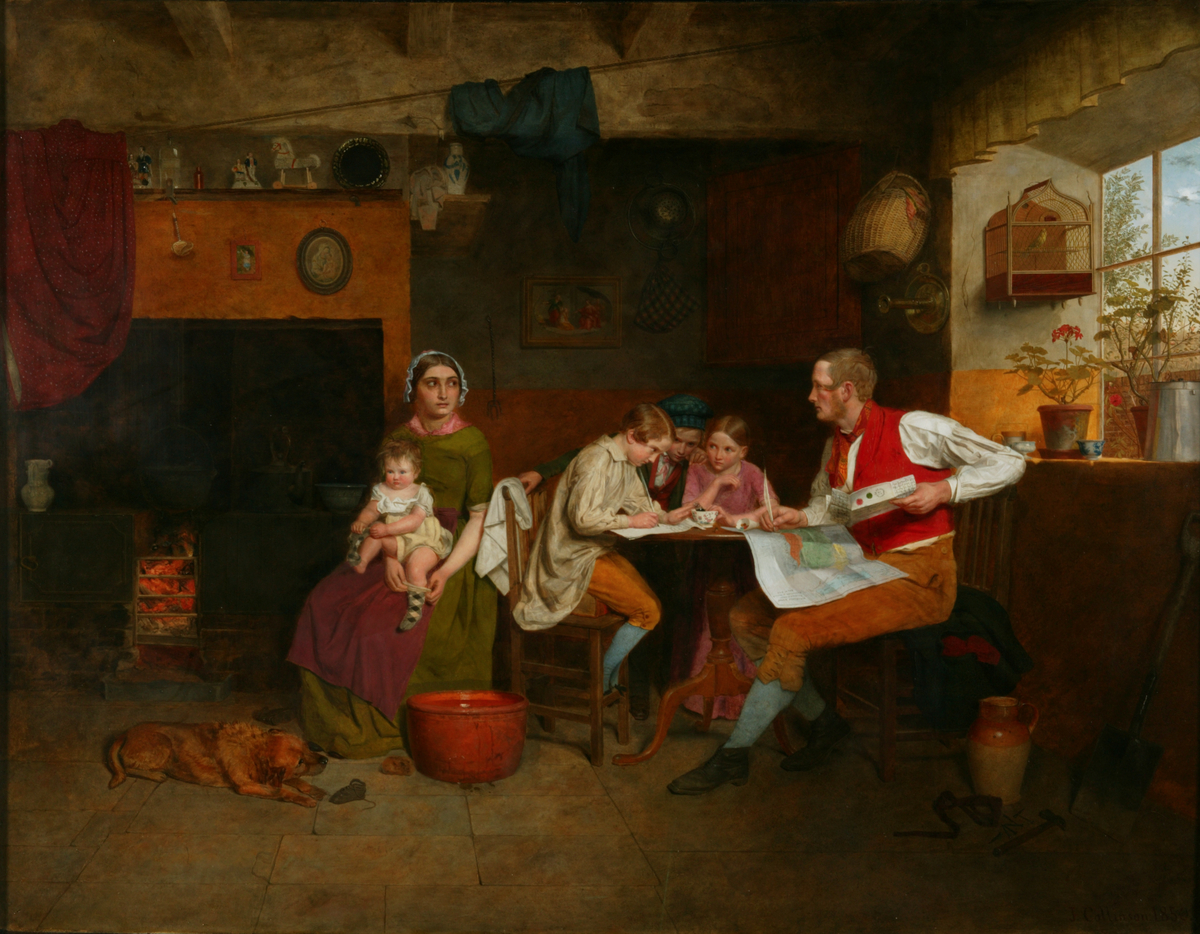Answering the Emigrant's Letter
Summary
Cottage scene of family, a man, woman, three children and baby, seated round a table in the corner of the room, writing a letter. On the right, the man, dressed in brown breeches, white shirt, and red waistcoat and neck tie, sits with a received letter in one hand, a map of South Australia on the table before him. The children are gathered closely together, intent on writing a letter on the table, the boy on the left holding the pen. The woman sits slightly apart from the group, her head turned slightly towards them, with a baby on her lap and a dog at her feet. She is wearing a green dress with a red apron, and a white bonnet. The baby attempts to pull a sock onto its right foot, copying its mother. Behind her, to the left, is a large black kitchen range, with the glow of a fire, and various toys and ornaments lining the mantlepiece. A bird sits in a cage attached to the wall next to a window on the right, pots of geraniums and cups lining the window sill. Sheets hang from a pulley system across the ceiling.
Display Label
Gallery text panel The Pre-Raphaelites in their Time Britain's first and best-known radical art movement emerged from within the Royal Academy in 1848. Its original members were rebellious art students who were disillusioned with contemporary practice. They looked back to Italian art before Raphael, seeing the pre-1500 period as one of great sincerity. They called themselves the Pre-Raphaelite Brotherhood. In an age of rapid industrial and urban expansion, Pre-Raphaelite artists like Rossetti, Hunt and Millais, and pioneering design reformers such as William Morris, sought a return to pre-industrial values of art and design in truth to nature and materials, and good workmanship. In addition, the arts of the Middle Ages and Middle East were important sources of stylistic inspiration. The Bible, literature and contemporary life were preferred over subjects derived from classical mythology. The Brotherhood also rejected contrived studio lighting and took canvases outside to paint directly from nature. Although attempting to convey exactly what they saw, they created a heightened reality of dream-like intensity with minute details and bright, dazzling colours. Their art was a new kind of history painting for a new age.
Object Name
Answering the Emigrant's Letter
Creators Name
Date Created
1850
Dimensions
framed: 110.3cm x 123.5cm
unframed: 70.1cm x 91.2cm
accession number
1966.179
Place of creation
England
Support
panel
Medium
oil paint
Legal
© Manchester Art Gallery

